American Primeval Review: Netflix is An Absolutely Unmissable Western Series
American Primeval arrives on Netflix and is the first big surprise on the small screen of 2025. Directed by Peter Berg, and written by Mark L. Smith, this series guides us in one of the most violent and contradictory periods in American history. Among ambushes, vendettas, and violence, we are offered sumptuous historical reconstruction, one of the best seen in recent years and placed within the vein of the modern Western with great incisiveness. Directed entirely by Peter Berg, the author of that interesting thematic trilogy on the average American in extraordinary situations composed by Lone Survivor, Deepwater, and Boston – Manhunt (all three played by Mark Wahlberg, whom Berg also directed with his first film Netflix, the success Spenser Confidential), American Primeval is the union between The Revenant and Horizon that you didn’t know you wanted: written by Mark L. Smith, author of the script of Alejandro Gonzalez Inarritu’s brutal survival western that earned Leonardo DiCaprio the Oscar exactly ten years ago, and endowed with the wide breadth of Kevin Costner’s epic, tells the story of a group of various characters who conflict over the territories of Utah, among white hunters, the United States Army, Mormons, and various Indian tribes in the area.
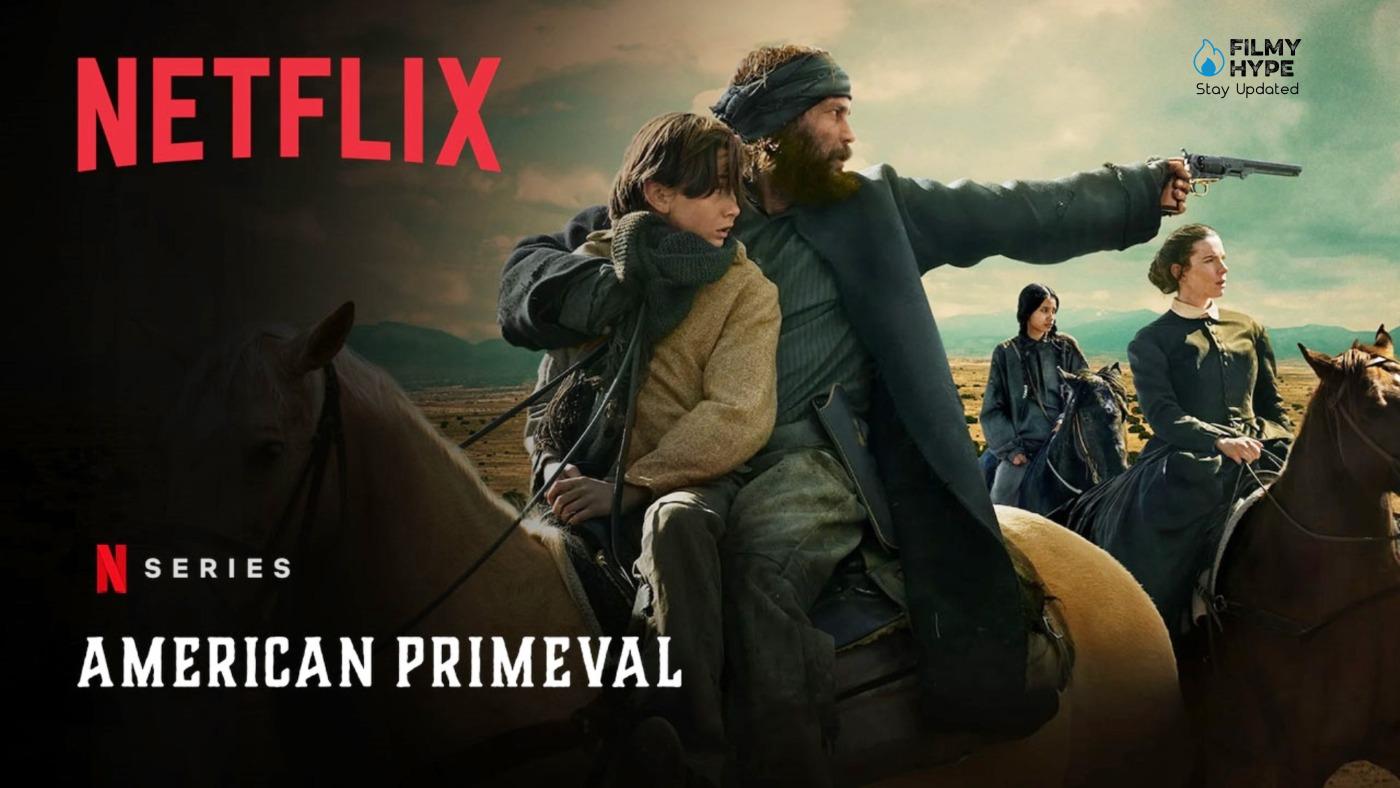
Netflix and Western is not a new combination at all, much less surprising at this point: from Godless to the revisionist The Harder They Fall, from the episodic Buster Scruggs Ballad a The Power of the Dog, the streaming platform has always had an eye, although thrifty, towards a genre that seems to be disappearing from the attention of the mainstream public – if you are wondering, the answer is yes, in this editorial we have sworn never to mention The Ridiculous Six. We had the opportunity to view American Primeval in its entirety and the answer is unfortunately a dry no. Not that it’s a product to be thrown by the wayside, on the contrary, don’t get us wrong. It’s just that, between a wonderful atmosphere and God set pieces memorable, in this western miniseries you often forget what you want to tell.
American Primeval Review: The Story Plot
In American Primeval, we initially get to know Sara Rowell (Betty Gilpin), who and her son Devin (Preston Mota) came from the East to look for her husband. That trip in 1857 took her to Fort Bridger, Utah, commanded by the legendary scout Jim Bridger (Shea Whigam, a remote and violent outpost within a state that was lost in racial and religious violence at the time. Governor Young (Kim Coates), belonging to the Mormon community, has started a sort of civil war against everything and everyone, to try to guarantee dominance over those lands to his religious community. In an attempt to reach her husband, Sara joins a caravan, which also includes Jacob (Dane DeHaan) and Abish Pratt (Saura Lightfoot-Leon), but his fate ends up overlapping that of Isaac (Taylor Kitsch), a sort of solitary adventurer who will reluctantly accept to guide them in those wild territories.
“American Primeval” has its heart in the re-enactment of the Mountain Meadows Massacre, the most notorious and famous episode of that sort of short civil conflict that would have changed the future of those territories forever. The rest of the series, however, is no different, given that from episode to episode we are among the natives Paiute, Shoshone, and Ute, then among renegades, bounty hunters, cutthroats of all kinds, soldiers, and course the Mormon religious militias. In this chaotic and violent universe, the series manages to empathize with us from the beginning with the various characters, with their tragedies, without however renouncing to immortalize a fantastic nature, supreme and almost unaware spectator of the man who destroys the man. We are in a world far from the romantic Hollywood vision, a narration that triumphs with humanity at the center broken to all pitfalls and impiety. A huge series that will appeal not only to the most hardcore fans of the genre.
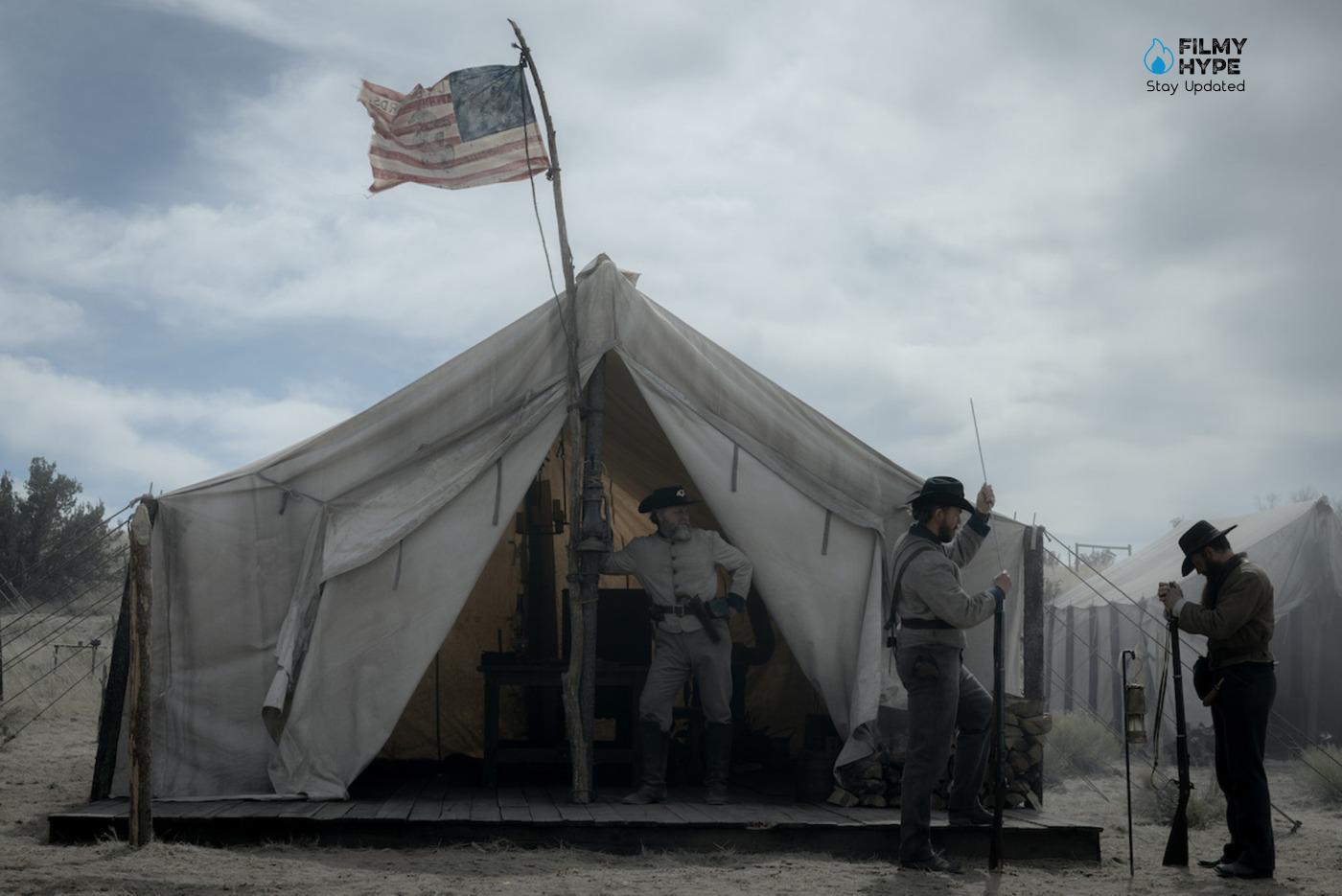
But, as usual, let’s proceed calmly and answer the long-standing question: what does American Primeval deal with? Set around the mid-19th century, Netflix’s miniseries follow Sara’s events (Betty Gilpin), a woman from the dark past who, accompanied by her son, desperately seeks a way of crossing the wild Utah of the time – shaken by the wars that were raging between the United States and Native Americans on the one hand and the Mormons led by Brigham Young on the other – to reach a place that brings with it such a long-awaited salvation and at least a new beginning. American Primeval, however, starts from such a base to then concentrates and expands with personal events and not with several other characters with which Sara comes into contact, giving in all respects a socio-political and human fresco of the all-round era.
A fresco supported first of all from a masterful and decidedly varied atmosphere for a western, usually linked in a double strand to chromatic variations of yellow and similar with its delicious barren/desert landscapes – it is a generalization, which however has its results. Here, however, it varies continuously, and never for the sake of doing it, there is a precise artistic direction that fully convinced us, and we cannot stress except insistently how crucial this is for any similar production. It doesn’t matter whether they are the snowy impervious mountains or the decadent gray-blue of a fort on the edge of civilized society American Primeval to admire is a pleasure. She is dirty, cruel, unjust, disturbing, ready to do her raison d’etre the essential and intoxicating dichotomy between the terrifying reality of the Wild West and the naive hopes of those who want to cross it in search of fame and glory.
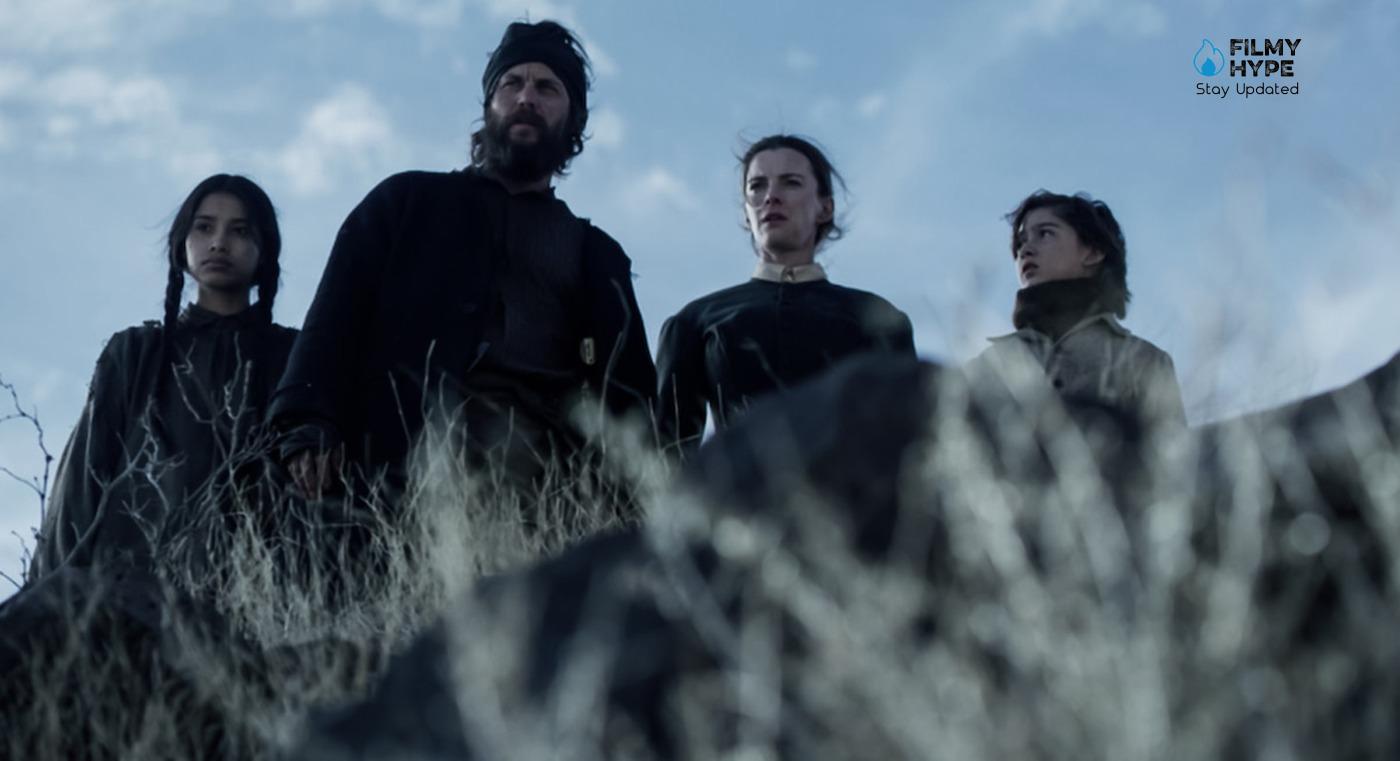
But aesthetics are not the only typical trait of Westerns that American Primeval manages to make its own without being an empty recycling or a simple quote: for example, Native Americans play a discreetly relevant role in the events, yet there is never the feeling of being in front of a stereotypical portrait, for better or for worse – there is no trace, in short, neither of a trivialization nor a false celebration. One character in particular then faithfully follows in the footsteps of the classic nameless hero of the Western epics, a cliché that could never have worked in a serial format for its rigidity and which instead the writers have been able to use to their advantage. We are not talking about measures with a transcendental outcome; however, they represent shrewdness that gives undeniable charisma and a peculiar coloring to the whole. Is there anything original? No, and it doesn’t have to be there, especially when the outline is managed so well. The climax is attested in the great action sequences, a handful of set pieces impressive – they are few but good, to use a somewhat abused expression.
American Primeval Review and Analysis
Direct from Peter Berg and written by Mark L. Smith, already known for “The Revenant”, “American Primeval” offers a raw and realistic representation of the period. The series stands out for its attention to historical details, with accurate sets and costumes that immerse the viewer in the era. The interpretation of Kitsch is Gilpin, they are intense and convincing, giving depth to their complex characters. The narrative addresses issues such as survival, border brutality, and power dynamics between various ethnic and religious groups. Another element that distinguishes “American Primeval” is its ability to weave historical facts with a dramatic narrative that explores moral dilemmas and human resilience. Through incisive dialogues and action sequences with attention to detail, the series offers a ruthless but authentic vision of a wild land where justice and brutality coexist. The soundtrack, composed of dark and poignant melodies, adds further emotional depth to the story, accentuating the sense of danger and isolation of the frontier.
The most dangerous territory of the time is precisely what Sara must cross. In 1857, Utah was still a territory of the United States, not an independent state. It was inhabited mainly by Mormons, who had settled there since 1847 led by Brigham Young. Tensions with the federal government grew over time until the President of the United States James Buchanan decided to send federal troops to the territory, starting the so-called Utah War. The main cause of the conflict was the practice of polygamy by Mormons, seen as immoral by American society at the time. The Republican party had made the fight against polygamy one of its programmatic points in the elections of 1856. The armed conflict between Mormons and federal troops began in May 1857, leading to the Mountain Meadows massacre, in which over 120 settlers were killed in September of that year.
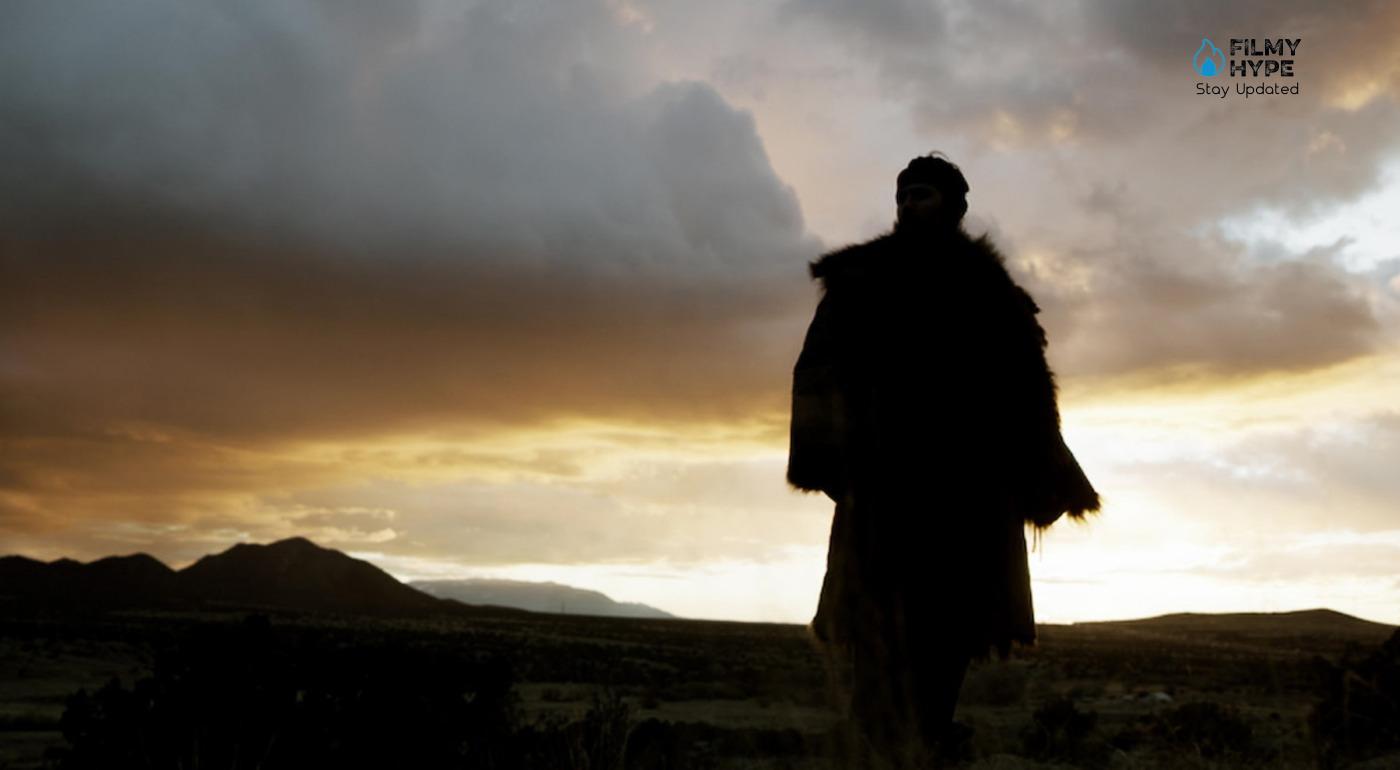
Utah’s situation in 1857 was therefore characterized by one serious political-religious crisis that led to armed confrontation with the federal government, eventually resolving itself through diplomatic negotiations. And then, of course, there was the question of the Native Americans, the so-called Indians, whose various tribes claimed, often with violence, the land that was stolen from them more and more quickly… As we said, the theater of events was the most dangerous territory of the time. While telling us Sara’s story, American Primeval it immerses us in the historical reality of the time, in a violent and ruthless world where no one could be trusted. The series also tells us through important stylistic choices: western is a genre that usually has a hot photograph, due to the landscapes in which it is set. American Primeval chooses instead to turn on the cold even when the yellow and barren earth is at the center of the narrative. The choice of colors off, even when they are red or orange, gives us back the idea of a hostile world, not welcoming, repellent. In particular for women and foreigners.
At the center of the story fits a real massacre, which we will witness as powerless and incredulous, and which will be decisive in the development of events. While the main Indian tribes of the area – Paiute, Navajo is Shoshone – take on different roles, American Primeval reminds us of how much blood has been shed for the conquest of the territory by European settlers. Against the background of the deeds of a Ku Klux Klan in an embryonic state and of natives who make agreements with the white man knowing that he cannot defeat him, American Primeval tells us a piece of American history but also the exciting story of a group of characters destined to leave its mark. Who knows he has blood-soaked hands and only worries that that blood is not visible, anyone is willing to sell even the closest friends for money and treason it is the true exchange currency of a cruel, violent, and built society on your mors, vita mea.
The Western genre, thanks to the success of Yellowstone and its prequels 1883 and 1923, is back in fashion. And it reminds us how – contemporary or not, historically realistic or not – his values have remained the same. American Primeval puts them at the center, contrasting them: on the one hand, the birth of a new world with uncontaminated territories that symbolize freedom is a possibility. On the other, the ’absence of compliance with the law, rules built ad hoc according to place and situation, men and women brave opposed to criminal the vile, treacherous and ruthless. The natives who line up alongside the invader massacre their brothers, unaware of the fact that they will in turn be massacred by the invader, once deemed no longer useful.
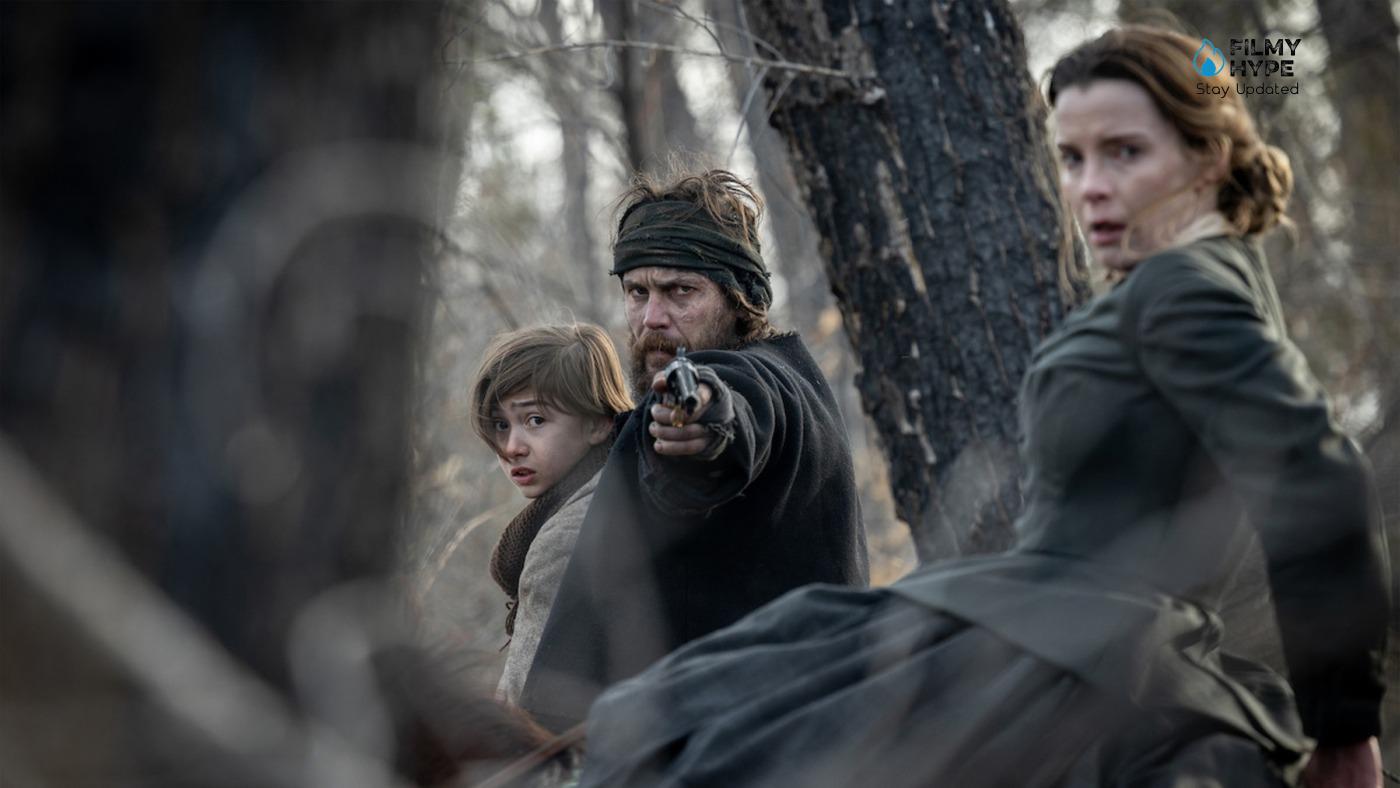
The retaliation law reigns supremely in a world corrupt in which only those who have studied and come from afar, from decidedly more civilized places, represent a voice out of the choir. Like the character of Captain Dellinger (Lucas Neff, The Handmaid’s Tale), whose reflections act as a narrating voice. Dellinger talks about a world without pity and compassion, and this is enough to describe the narrative context of American Primeval. But going beyond appearances, as in the case of Isaac – and also in that of Sara – one discovers the hope of a better world. But it will take some time. Because, for now, in that world, you die suffering, in pain and loneliness. The beauty of the lands that surround it, of which the captain writes, is enhanced by the landscapes first barren and then snowy, first hot and then frozen, which make nature a real character, called to determine the fate of others.
“American Primeval” has the great advantage of not having anything with it that can make it a pure derivative product, since it is very distant from the classic epic that Kevin Costner has chosen for his “Horizon” saga. However, there is also no denying that there is something that differentiates it deeply from the narrative that has made Taylor Sheridan capable of literally revitalizing the genre over the past 15 years. Someone will surely notice some resemblance to one of his jewels such as “1883”, or to “The English” Hugo Blick, “Frontier” of seven years ago. However, “American Primeval” appears to have much more in common with what films such as Innaritu’s “The Revenant” or Scott Cooper’s “Hostiles” have been on the big screen. Of all, of course, Betty Giplin’s interpretation stands out. His Sara is a female character symbol of rebellion and emancipation in a real sense, where the mere will to survive which over time will also become that of a necessary self-determination.
All this, however, in that world where men decide on life and death, with all due respect to the Manichean division between good and bad always distributed only between whites and natives as in a certain cinematography of the past. No sir, this is a series where the clash between civilizations, and different visions of life alternates with a power struggle, with violence as a universal language. “American Primeval” is also yet another demonstration of how much Taylor Kitsch is a tremendously underrated actor. His Isaac is a tribute to the great characters of Twilight and the revisionist genre, those who directors such as Sam Peckinpah and Ralph Nelson, made the protagonists of an unforgettable season of Western cinema. “American Primeval” is an engaging, powerful story, also visually edited in every detail, with a splendid photograph, and simply magnificent mass scenes. Above all, there remains a historical fresco of great importance, with which to tear apart the myth of the Frontier and the celebration of a country that was built on blood and injustice.
Despite this, it is precisely here that the obvious critical issues of American Primeval begin on the technical side. There are, first of all, obvious assembly problems, both in the individual sequences – which are often and willingly cut excessively abruptly by the person who speaks to concentrate on something else – and between one scene and another, with the only result of generating unnecessary confusion in certain episodes. In addition, there is a pervasive use of Dutch corners, at times a little cheap and in quantities such as to be more an obstruction instead of an instrument to bring psychological tension on the screen during confrontations. In a clear minority of cases, the set goal is achieved, we admit it, while in the rest it seems to be witnessing an exercise in style whose dosage has been largely wrong.
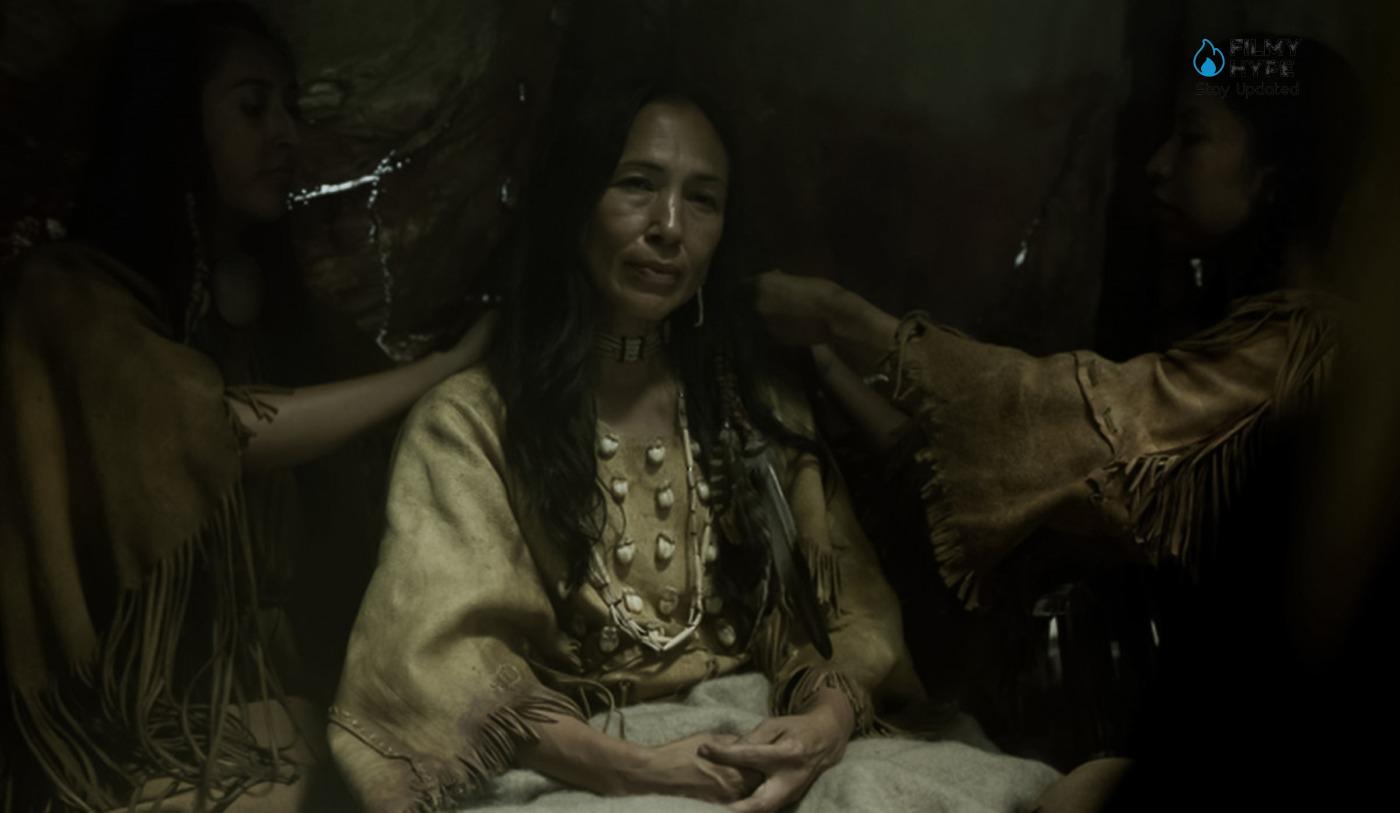
The other huge macro-set of problems derives, as we had already mentioned in the introduction, from the narrative fabric: American Primeval is a series that does not know exactly what it wants to tell, and it is difficult to set priorities. The series starts with a very precise canvas where the absolute protagonist looks like Sara and soon expands to incorporate other storylines, which however are implemented almost net of randomness, random elements that take the limelight. Initially, there is no indication that Bridger (Shea Whigham) or Jacob (Dane Dehaan) will play a greater role than meetings along Sara’s journey and consequently, when the focus returns on them you have the unpleasant feeling of being watching something secondary for too long. But no, it is the exact opposite, they are pieces that cover a similar, if not even greater, minute than Sara. These are raw and intriguing events, the problem does not lie in this case in the content but in the management, who never manages to convey the importance and centrality of some characters.
We therefore arrive at a confusional state that lasts as long as it is realized that American Primeval, in an attempt to juggle and balance its main storylines, does not know what to pay attention to: in the desire to seek balance and a time on the screen as homogeneous as possible for all its components, it does not realize that some simply they do not have the quantity of suitable material to last so long and consequently others would have needed more minute to express all their potential. Then the game of narrative counter-senses was created, of the forcing that could have been avoided with simplicity and with the addition of some more scenes, of repetitions of patterns that in a miniseries should never find a place. In a nutshell and to avoid spoilers, the exacerbation of an economic-religious conflict with numerous deceptions and moving parts cannot trivially have the same minute as a crossing between the mountains, even too long, since both emerge from it weakened – even if paradoxically opposite reasons. American Primeval is the first missed opportunity of 2025. Perhaps yes, although regardless it is not an unmissable masterpiece. Surely, he could give me something more here.
American Primeval Review: The Last Words
American Primeval is a good Western that makes its atmosphere and aesthetics the best traits. And when we say better, we mean it literally, the new Netflix series is a pleasure to admire for its actual dirt and malice, for its variable chromaticity without being out of place, and for its mood that does not make discounts. And above all, he knows how to use some of the best-known Western clichés in his favor, an aspect that should never be underestimated, up to – a few, but very good – large memorable action set pieces. The problem is, in addition to a general lack of attention on the technical side in most daily and passage sections, that American Primeval does not know exactly what he wants to tell. It is a series unable to prioritize certain things over others, in an attempt to give a homogeneous minute to all its components, he does not realize that some storylines did not have the material at all to last long and others would have deserved to be expanded. The result is a narrative canvas that is all in all enjoyable, but extremely weakened and not without some forcing and repetition.
Cast: Taylor Kitsch, Tokala Black Elk, Alex Fine, Derek Hinkey, Nanabah Grace, Jeremy Gauna, Kip Weeks, Kaius Eteeyan, Dominic Bogart, Bodhi Rader, Mikandrew
Director: Peter Berg
Streaming Platform: Netflix
Filmyhype.com Ratings: 4/5 (four stars)

American Primeval Review: Netflix is An Absolutely Unmissable Western Series | Filmyhype

Director: Peter Berg
Date Created: 2025-01-09 15:35
4



